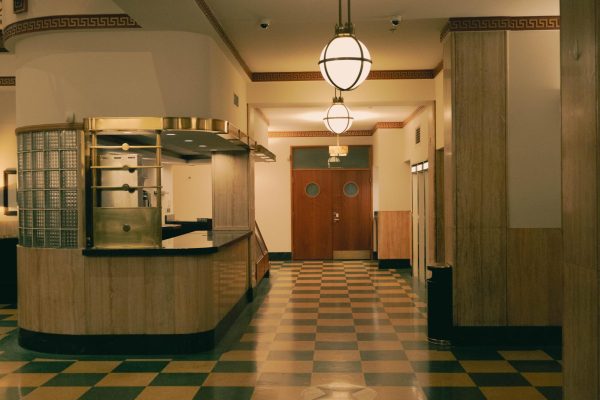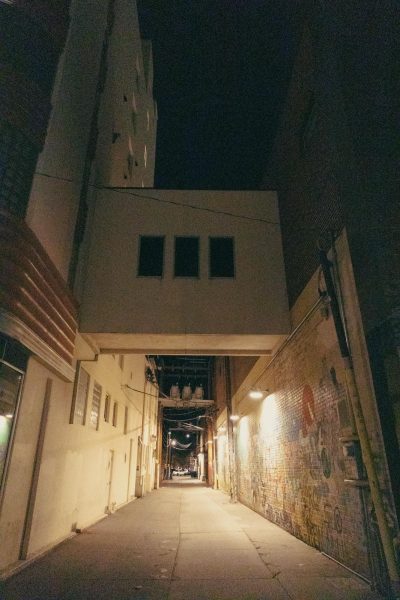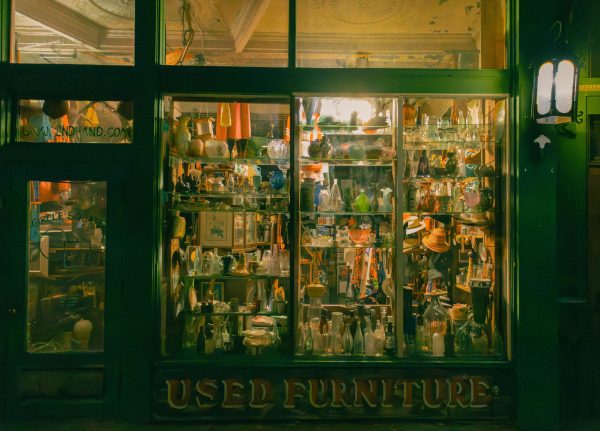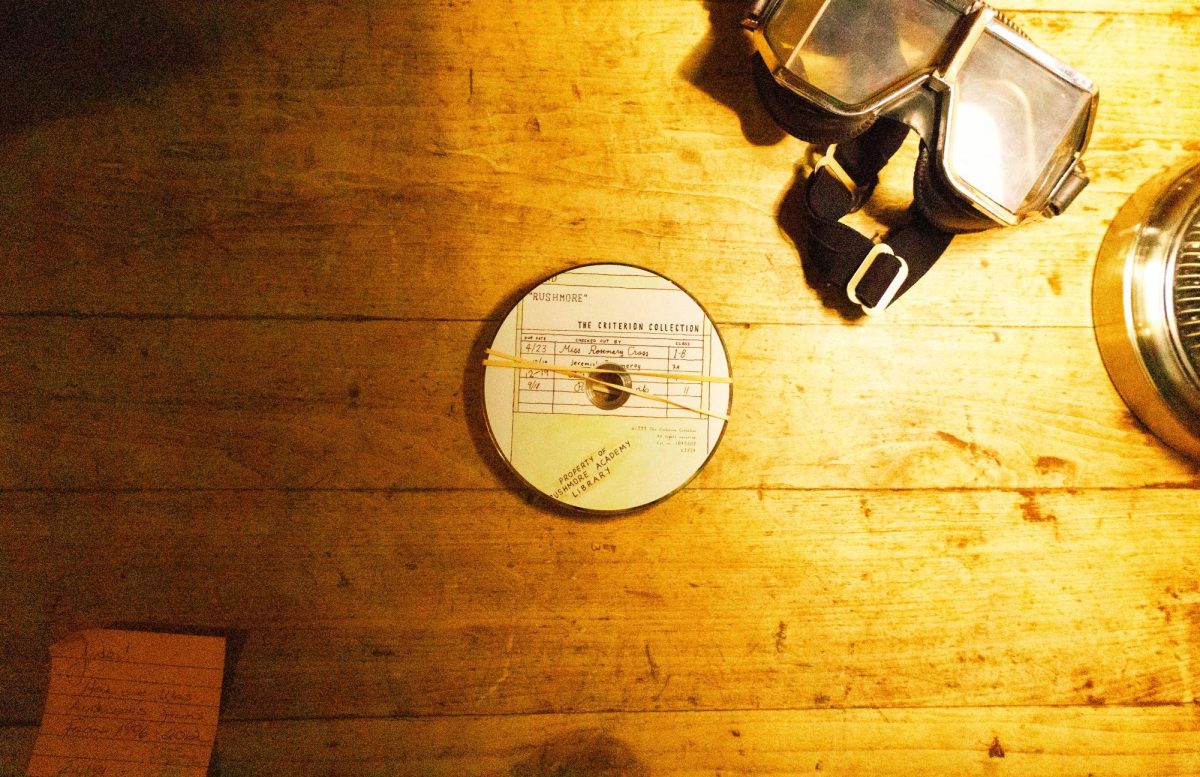The French Dispatch, directed and written by Wes Anderson, is a film split into three distinct sections, with an obvious introduction and a sorrowful closure. The French Dispatch is a newspaper facing an impending termination. The tension this creates has the journalists writing one final issue.
The film starts with an introduction to the writers. An obituary is the tool Wes Anderson used to set the scene. The following stories consist of a quick travel guide named ‘The Cycling Reporter,’ providing us a tour around the city Ennui-sur-Blase written by Herbsaint Sazerac, and three featured articles consisting of, ‘The Concrete Masterpiece’ by J.K.L Berensen, ‘Revisions to a Manifesto’ by Lucinda Krementz, and finally ‘The Private Dining Room of The Police Commissioner’ by Roebuck Wright. All are from the French Dispatch, an American magazine company in Ennui, France.
The now deceased Editor- in- Chief- Arthur Howitzer Jr, played by Bill Murray- was planning to put out The French Dispatch’s final installment. Now suddenly deceased due to a heart attack, his will is the only fighting force for the publishing company, or so the journalists thought. As his will is being read the dusty newsroom is filled with sniffling and silence. The mood is heavy here, the writers are being told that The French Dispatch is to be immediately suspended after the death of their Editor-in-Chief.
Now frantically going through ideas in a hasty topic discussion, everyone puts out their final idea, and the topics chosen are unapproved by any editor. These articles are now a perfect representation of the writer, a piece untouched or tainted by a previous strict chief.

The Cycling Reporter- by Herbsaint Sazerac
Sazerac delivers a tour by bike, a detailed journey through the town of Ennui, France, where the publishing company is situated. Ennui sur-Blase, the city, in French means weary boredom, and apathy. Herbsaint gives details of the past and present, like in the pick-pocket alleyways, and how they’ve changed from old men in wool suits to mohawked punks and their menacing motives. Child variants of these criminals run amok in the city of Ennui, taking over a bakery, and eventually dismantling Sazerac’s bike and stealing the now broken bits and pieces. Sazerac’s story now comes to an end but is well told, giving a brief description of Ennui and how it has changed.

The Concrete Masterpiece- by J.K.L Berensen
J.K.L Berensen’s section is a lecture, delivered at an art gallery. She tells a story about Moses Rosenthaler, a mentally disturbed inmate serving a sentence at Ennui prison for murder.
Arts & Artists, Section 1 opens with a nude shot of Simone, Rosenthaler’s muse. The abstract nude portraits of Simone, with whom he has a flourishing relationship, are unique, and peculiar, and are only understood at the close of the article. Simone goes behind a dressing divider, coming out in a guard’s uniform, and puts Rosenthaler into a straitjacket. Simone is his prison officer.
His art is sought after by a prisoner detained for tax evasion, Julien Cadazio. Julien is an art dealer and buys Rosenthaler paintings despite his protests, saying his art isn’t for sale. Adrien Brody’s character then announces explicitly that “all art is for sale, you wouldn’t make it if it wasn’t.” Cadazio convinces his family of art dealers to promote the painting, and Rosenthaler soon becomes famous. Pressured by this unwanted attention, Rosenthaler struggles with inspiration. He then privately devotes himself to a long-term project.
Now three years later, Cadazio and a mob of artists are angered at the fact no further paintings have been released. They bribe their way into the prison and find a series of frescoes on the concrete prison hall. These frescoes are irremovable from the prison, plastered to the walls. Cadazio starts a fight with Rosenthaler because of this, but he soon begins to appreciate the paintings for what they are. He arranges for the entire room to be airlifted to a museum in Kansas. Rosenthaler is released on probation for halting a prison riot during the reveal. Simone and Rosenthaler make efforts to maintain their relationship after he is released.

Revisions to a Manifesto – Lucinda Krementz
Krementz reports on a student protest in Ennui that became the renowned “Chessboard Revolution”. The protest is simple:, girls in ennui are initially protesting access to the girls’ dormitory.
Politics & Poetry, Section 2. A sudden implication with a young soldier named Mitch-Mitch inspires a much greater uprising. The protest is surrounded by the vagaries of war and how they destroyed the lives of young recruits like Mitch-Mitch’s. Mitch-Mitch takes off his beret and pins showing his newfound loyalty to the protest.
Krementz holds a belief in maintaining “journalistic neutrality”, but has a brief romance with Zeffirelli, the leader of the revolution. She secretly helps him write his manifesto for the revolt. A fellow revolutionary named Juliette is unamused by his manifesto, and slightly opposed, since she was the initial protester of the girls’ dormitory, her revolt is being taken hold of. After a disagreement, Krementz tells the two to “go make love” as she is very much aware of the blooming relationship between the two revolutionaries.
The movement starts a radio station, which brings more implications, killing Zeffirelli in his attempts to repair the radio tower. A photograph taken of him becomes a symbol of the movement. Krementz adapts the story of Mitch-Mitch’s enrollment into the military, and Juliette and Zeffirelli’s Relationship into a play for the theater.

The Private Dining Room of The Police Commissioner – Roebuck Wright
Roebuck Wright is a food journalist with the unique capability of remembering every single word he’s written. In a television interview, Roebuck recounts the wonderful story of The Private Dining Room of The Police Commissioner.
Tastes & Smells, Section 3. The dinner is prepared for the Commissioner by Lt. Nescaffier, a specialist in a cuisine dedicated to being eaten by police officers. The Police Commissioner’s son Gigi is kidnapped during the dinner with Roebuck attending. Gigi is being held captive for ransom by a group of criminals led by a musician who goes by the name The Chauffeur.
The kidnappers are the same criminals that were mentioned in the cycling tour of Ennui, and . These kidnappers are representative of the citizens living In Ennui-sur-Blase. The criminals demand the immediate release of the underworld accountant who goes by Albert, who is being held in a solitary confinement cell at police headquarters. The accountant holds their financial records, which is why he is so sought after by the criminals. Wright recalls his imprisonment for his homosexuality in the same prison, afterwards he is bailed out by Howitzer and given a job at the French Dispatch.
Gigi manages to send a message in Morse code through the pipes with a small coin reading “send the cook” at the kidnapper’s hideout. Lt. Necsaffier is sent to the kidnappers’ hideout to provide a meal for the criminals and Gigi. The food is laced with poison, and to prove it’s not, Nescaffier tastes his deadly meal. The criminals succumb, but due to his strong stomach, Nescaffier barely survives.
The Chauffeur escapes with Gigi, which leads to a police chase. Gigi escapes out of the sunroof and can reunite with his father, The Police Commissioner. Nescaffier saves Albert “The Abacus” from starvation by cooking a quick omelet.
A jump back into the dispatch office we see Howitzer telling Roebuck to reinsert a certain part of his article. In the segment, Nescaffier details how the poison was something he’s never tasted before, and they commemorate being foreigners in France.
Epilogue –
The whole French Dispatch editorial staff – excluding Howitzer – joined together to write his obituary for the final issue to honor his memory.



Other Wes Anderson inspired shots.




